The term dyslexia refers to persons for whom reading is simply beyond their reach. What causes this disorder? This article investigates the three leading causes of dyslexia: genetic influences, cognitive deficits, and brain differences.
Table of contents:
- Introduction
- What is dyslexia?
- What causes dyslexia?
- Dyslexia cause no. 1: Genetic influences
- Dyslexia cause no. 2: Cognitive deficits
- Dyslexia cause no. 3: Brain differences
- Tutoring children with dyslexia
- Key takeaways
- Delve deeper
Introduction
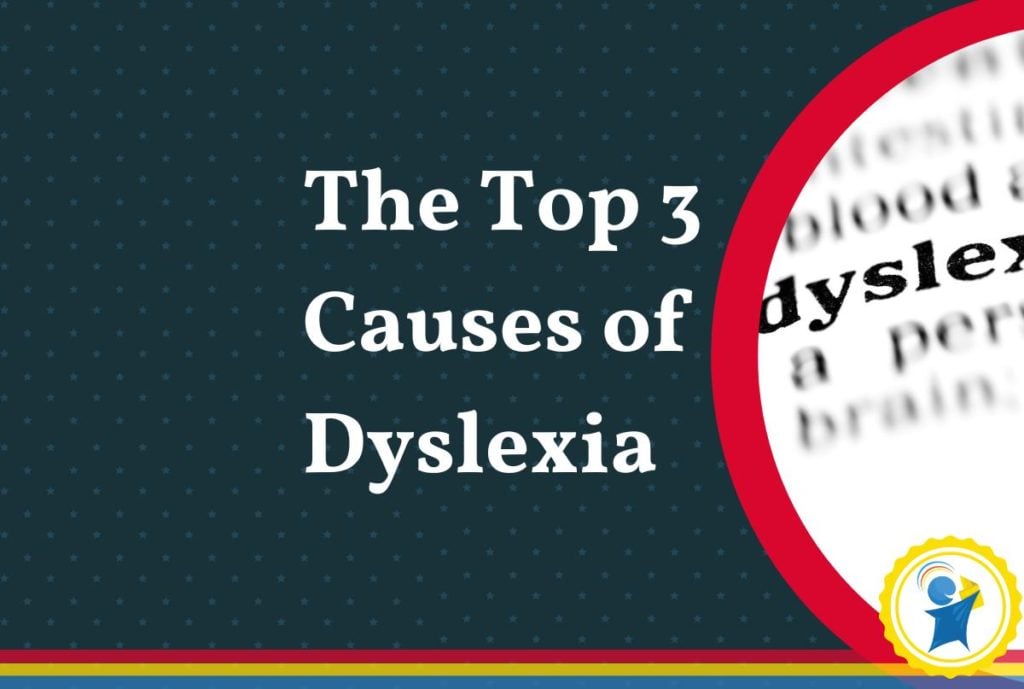
Eight-year-old Peter is one of the brightest children in his 3rd-grade class. He has an amazing vocabulary and knows everything there is to know about football. But when it comes to reading about football, he has a lot of trouble.
It takes Peter a long time to read each word and even longer to read whole sentences. He often has to guess how you say a word — sometimes, his guess is wrong. Reading out loud is especially stressful and embarrassing. His teacher recently told Peter’s parents she thinks he might have dyslexia.
What is dyslexia?
The term dyslexia was coined from the Greek words dys, meaning ill or difficult, and lexis, meaning word. It refers to persons for whom reading is simply beyond their reach.
People with dyslexia have trouble processing words on paper, resulting in poor word recognition, low reading fluency, insufficient reading comprehension, trouble spelling, and poor writing skills. In addition, many kids with dyslexia suffer from low self-esteem.
In their Diagnostic and Statistical Manual, 5th edition (DSM-5), the American Psychiatric Association uses the term ‘Specific Learning Disorder with impairment in reading’ to describe what others call dyslexia. The DSM-5 considers dyslexia “specific” for four reasons: it is not attributable to
- intellectual disabilities, generally estimated by an IQ score of 65-75;
- global developmental delays;
- hearing or vision disorders; or
- neurological or motor disorders.
Dyslexia is best thought of as a continuum, not a distinct category, and there are no clear cut-off points. Like hypertension, it can vary in severity. The terms mild, moderate, and severe are commonly used to describe the degree.
What causes dyslexia?
There is a labyrinth of differing, opposing, and often contradictory theories about dyslexia: what it is, its causes, and its possible correction. For example, the cerebellum, a brain structure traditionally considered to be involved in motor function, has been implicated in developmental dyslexia. New research shows that the cerebellum is not engaged during reading in typical readers and does not differ in children with dyslexia (Ashburn et al., 2019).
The visual magnocellular deficit theory suggests that a dysfunction of the magnocellular system, a part of the visual system, causes the visual processing difficulties seen in dyslexia (Stein, 2018).
Miller (2015) says the most significant cause of reading difficulty is the unsystematic and unscientific teaching of reading. As a result, children are let down twice by the educational system: first by not being adequately taught and then pathologized with the “diagnosis” of dyslexia when they fail.
We discuss the most common proposed causes of dyslexia in more detail.
Dyslexia cause no. 1: Genetic influences
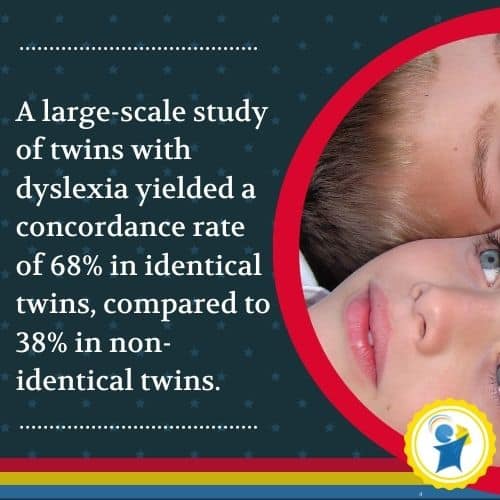
There is a large body of research on children at risk due to a family history of dyslexia, including seven longitudinal studies covering age ranges from preschool/kindergarten through 2nd, 4th, or 6th grade.
The prevalence rate for dyslexia in the general English-speaking population is between 5 and 17%. However, the rate of reading-related skill deficits (e.g., word reading, orthographic coding, phonological decoding, and phoneme awareness) based on familial risk studies is between 35 and 40% (Molfese et al., 2008).
The relative contributions of genetic influences and shared family environment can be dissected in twin studies. It has been shown robustly that a diagnosis of dyslexia is significantly higher in identical twins who have a virtually identical genetic makeup than in non-identical twins who share about half of their genetic makeup (like ordinary siblings). A large-scale study of twins with dyslexia yielded a concordance rate of 68% in identical twins compared to 38% in non-identical twins (DeFries & Alarcón, 1996)..
Dyslexia cause no. 2: Cognitive deficits
Although some causes of dyslexia have a genetic origin and environmental factors play an important role, cognition mediates brain-behavior relationships. Therefore, it offers a sufficient level of explanation for developing interventions. Thus, we need to understand the cognitive difficulties that underpin reading failure, regardless of whether their origin is constitutional or environmental (Elliott & Grigorenko, 2014).
Dyslexia research has been dominated by the quest for a single cognitive deficit that is necessary and sufficient to cause all behavioral characteristics of the disorder. Until the 1950s, the belief was that dyslexia is attributable to visual processing problems, perhaps also including motor skill problems. Visual processing refers to the brain’s ability to make sense of what the eyes see; visual memory is often considered a subset of visual processing rather than a separate skill.
But in 1957, Noam Chomsky published his seminal book, Syntactic Structures, which transformed the study of language and, with it, reading. Dyslexia became a linguistic and phonological problem, and any role for visual processing was abandoned. In an influential book, Dyslexia: Theory and Research, Vellutino (1979) argued that many of the apparent visual problems could be attributed to language difficulties — especially to deficient phonological awareness.
Dyslexia and the phonological deficit theory
The phonological deficit theory became the most well-developed and supported of the dyslexia theories. The U.S. researchers have united in adopting the phonological deficit hypothesis since the early 1980s. This united front has led to the investment of more than $15 million annually by the U.S. government via the National Institute for Child Health and Human Development (NICHD) (Fawcett, 2001). This research program into the causes and remediation of reading disabilities continues until the present day.
Phonological awareness (PA) refers to an individual’s awareness of a language’s sound structure. It is a listening skill that includes distinguishing speech units, such as rhymes, syllables in words, and individual phonemes in syllables. Phonemic awareness is a subset of PA that focuses on recognizing and manipulating phonemes, the smallest sound units. The two most crucial phonemic awareness skills are segmenting and blending.
The ability to segment and blend phonemes is said to be critical for developing reading skills, including decoding and fluency, and even that it predicts reading ability (Edwards & Taub, 2016). It is also claimed that PA training can prevent and correct reading difficulties (Kilpatrick, 2016, p. 13). Moustafa, however, points out that correlation does not establish causation. “In statistics, the word predicts means nothing more than that there is a high correlation between two phenomena” (Moustafa, 2001, p. 248).
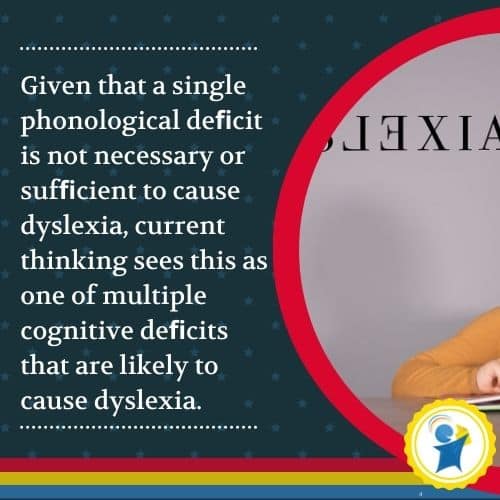
Not all studies support phonological and phonemic awareness training (Pape-Neumann et al., 2015; Krashen, 1999a; Krashen, 1999b). For example, Blomert and Willems (2010) investigated children at familial risk for dyslexia in kindergarten and first grade. The familial risk was genuine; 40% developed reading deficits in first grade. However, they did not find any relationship between a PA or other phonological processing deficits in kindergarten and reading deficits in first grade.
Some findings indicate that phonemic awareness may develop as a consequence of exposure to reading and writing. Others support an intermediate view, “that phonological awareness and alphabetic literacy learning influence each other reciprocally” (Manolitsis & Tafa, 2011, p. 31).
Some researchers claim that phonological factors may be less important than is commonly accepted. Not all children with reading disabilities demonstrate a phonological deficit, and children with poor phonological abilities can nevertheless develop good reading skills (Catts & Adlof, 2011).
Also, a single cognitive deficit model cannot account for comorbidity. Dyslexia co-occurs more often than expected by chance with other developmental disorders, such as ADHD and specific language impairment.
Dyslexia caused by multiple cognitive deficits
Given that a single phonological deficit is not necessary or sufficient to cause dyslexia, current thinking sees this as one of multiple cognitive deficits that are likely to cause dyslexia (Pennington, 2006; Peterson & Pennington, 2012).
In addition to phonological awareness, cognitive psychology has now linked many cognitive skills to dyslexia:
- verbal fluency;
- attention and executive functions;
- visual attention;
- visuospatial abilities;
- processing speed;
- short-term memory;
- auditory working memory;
- visual memory and visual sequential memory;
- visual long-term memory, especially for details;
- verbal long-term memory; and
- rapid naming.
Dyslexia linked to verbal and nonverbal IQ
Researchers have also found a link between dyslexia and verbal and nonverbal IQ. Van Bergen et al. (2013) assessed four-year-olds (N = 212) with and without familial risk for dyslexia on ten IQ subtests. Reading and arithmetic skills were measured four years later, at the end of Grade 2.
Relative to the controls, the at-risk group without dyslexia had subtle impairments only in the verbal domain, while the at-risk group with dyslexia lagged across IQ tasks. Nonverbal IQ was associated with reading and arithmetic, whereas verbal IQ was uniquely related to later reading. The children who went on to develop dyslexia performed relatively poorly in both verbal and nonverbal abilities at age four, which lends credence to the multiple cognitive deficit model.
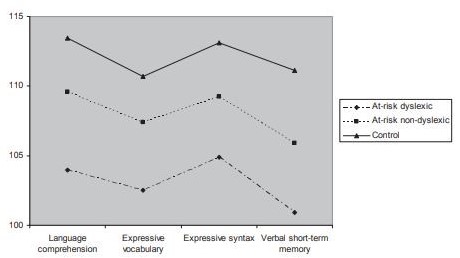
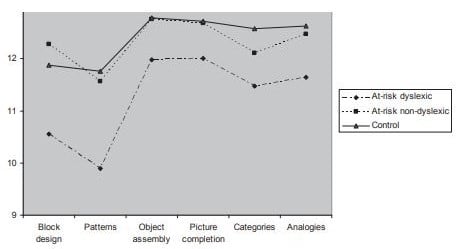
Why cognitive skills matter
Weak cognitive skills prevent a process called orthographic mapping. Every word has three forms: its sounds, spelling, and meaning. The process of orthographic mapping involves the brain linking the three forms of the word and storing them together in long-term memory. Orthographic mapping allows for instant word recognition, fluent reading, and accurate spelling.
Dyslexia cause no. 3: Brain differences
There is old but popular evidence consistent with the idea that there is something different in the brain of some persons who have persistent unexpected difficulty in learning to read. Specifically, Galaburda and colleagues (1985) reported several anatomical anomalies in the brains of a few persons with dyslexia.
Although those findings are intriguing, they are far from decisive. The samples were extremely small (a total of four men and three women) and included participants with neurological or psychiatric conditions and participants with impairments not limited to written language. These participants should have been excluded from a study purporting to examine brain correlates of dyslexia. The control group was also very small, effectively precluding reliable estimation of the specificity of any findings.
The visual word form area critical for reading
As technology advanced, neuroscience contributed more and more to dyslexia research. Unfortunately, most studies have too small samples to permit reliable conclusions to be drawn, and many results are inconsistent (Protopapas & Parrila, 2018).
In a meta-analysis of functional neuroimaging studies of dyslexia, Martin et al. (2016) list studies in which differences in brain regions were found between groups with and without dyslexia. The most consistent findings concerned the left occipitotemporal cortex, which includes the so-called visual word form area (VWFA), thought critical for reading.
Neuroscientists at Georgetown University Medical Center concluded that skilled readers can recognize words at a lightning-fast speed when they read because the words have been placed in a sort of visual dictionary. This part of the brain, the VWFA (shown in yellow), functions separately from an area that processes the sounds of written words (Glezer et al., 2016).
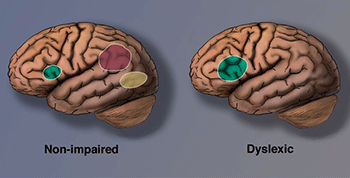
In the largest study of its kind up to date, Brem et al. (2020) confirmed that the VWFA is key to fluent reading.
The left parietal lobe came in second
The left inferior parietal lobule came in a close second in the meta-analysis study by Martin and colleagues (shown in red). This part of the brain is involved in word analysis, grapheme-to-phoneme conversion, and general phonological and semantic processing.
Imaging also reveals compensatory overactivation in other parts of the reading system (shown in green). The compensatory neural systems allow a dyslexic person to read more accurately. However, the critical visual word-form area remains disrupted, and difficulties with rapid, fluent, automatic reading persist. The dyslexic continues to read slowly.
Brain differences do not equal brain disorders
Protopapas and Parrila (2018) point out that brain differences do not equal brain disorders. Also, anatomical differences may be a consequence of reading experience as opposed to a cause of dyslexia (Krafnick et al., 2014).
It should be noted that the brain is plastic. New connections can form, and the internal structure of the existing synapses can change. New neurons, also called nerve cells, are constantly being born, particularly in the learning and memory centers. Approximately 700 new neurons are formed daily in the brain. Neurons die each day, too, keeping the overall number more or less balanced, with a slow loss of cells as we age. A person who becomes an expert in a specific domain will have growth in the areas of the brain that are involved with their particular skill.
The human brain is a powerhouse. The human brain has put a man on the moon, created the silicon chip that can do billions of calculations per second, invented red, yellow, and green lights to control millions of people in traffic every day, and — believe it or not — found ways to see what goes on inside itself. The human brain itself tells us that it is most certainly capable of overcoming learning obstacles like dyslexia, despite genetic influences and brain differences.
.
Tutoring children with dyslexia
Edublox specializes in educational interventions that make children smarter, help them learn and read faster, and do math easily. Our programs enable learners to overcome reading difficulties and other learning obstacles, assisting them to become life-long learners and empowering them to realize their highest educational goals.
Watch our playlist of customer reviews and experience how Edublox training and tutoring help overcome dyslexia symptoms and signs. Learn more about our approach to dyslexia treatment and book a free consultation to discuss your child’s learning needs. We cater to a variety of dyslexia types.
Key takeaways
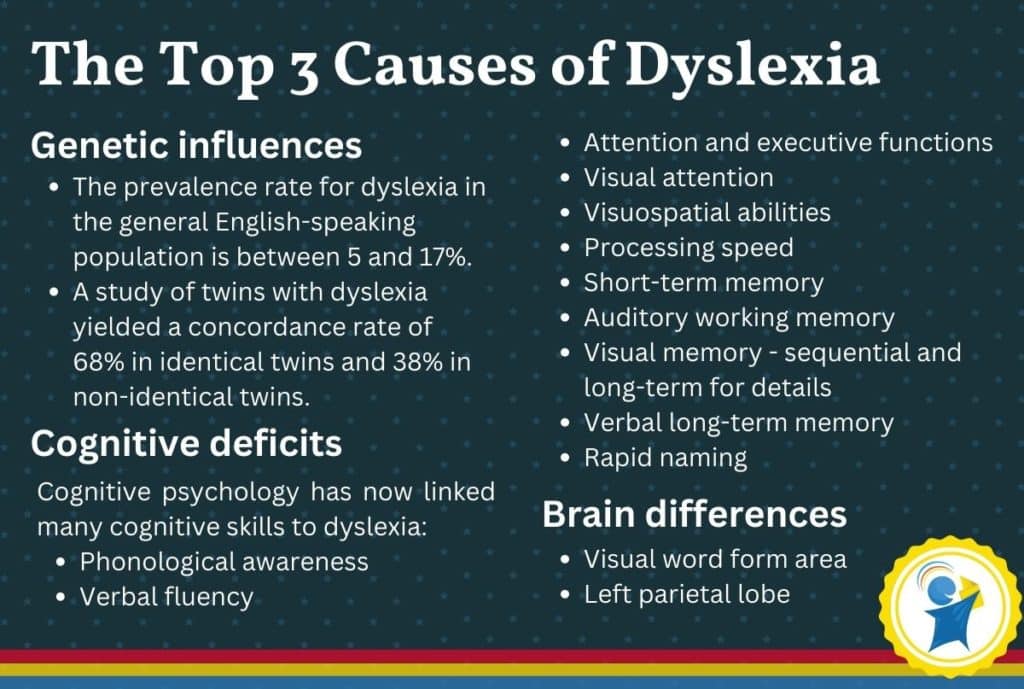
Delve deeper
Understanding dyslexia in children
Learn more about dyslexia basics: What is dyslexia? What are the signs of dyslexia? What is the impact of this reading disorder? What causes dyslexia? What cognitive difficulties underpin reading? How is dyslexia diagnosed? Can dyslexia go undetected? What is the best treatment?
Dyslexia symptoms, early warning signs, risk factors
We investigate the symptoms of dyslexia, early signs of dyslexia, and risk factors for dyslexia.
What are the 12 types of dyslexia?
We discuss 12 dyslexia types: Primary, secondary, developmental, and acquired dyslexia; phonological dyslexia and surface dyslexia; deep, letter position, attentional, letter identity, neglect, and vowel letter dyslexia.
Dyslexia theories and models
About dyslexia theories: the phonological deficit theory, magnocellular theory, rapid naming deficit, double deficit dyslexia, and a multi-cognitive deficit model that considers all the aspects that may contribute to dyslexia.
Dyslexia and the brain
This article reveals the differences between the dyslexic brain and the typical brain, based on the latest research.
Dyslexia diagnosis: How is dyslexia diagnosed?
How is dyslexia diagnosed? What is the difference between dyslexia screening and dyslexia testing? Who can diagnose dyslexia? What happens after a dyslexia test? Learn more about an Individualized Education Plan (IEP) and online tutoring for dyslexia.
Dyslexia treatment program
Dyslexia treatment based on four pillars: (1.) the Orton-Gillingham approach, (2.) cognitive training, (3.) the development of two crucial brain areas for reading and writing, and (4.) solid learning principles. Is there, at last, some light at the end of the tunnel?
Authored by Sue du Plessis (B.A. Hons Psychology; B.D.), a reading specialist with 30+ years of experience in learning disabilities.
Medically reviewed by Dr. Zelda Strydom (MBChB).


